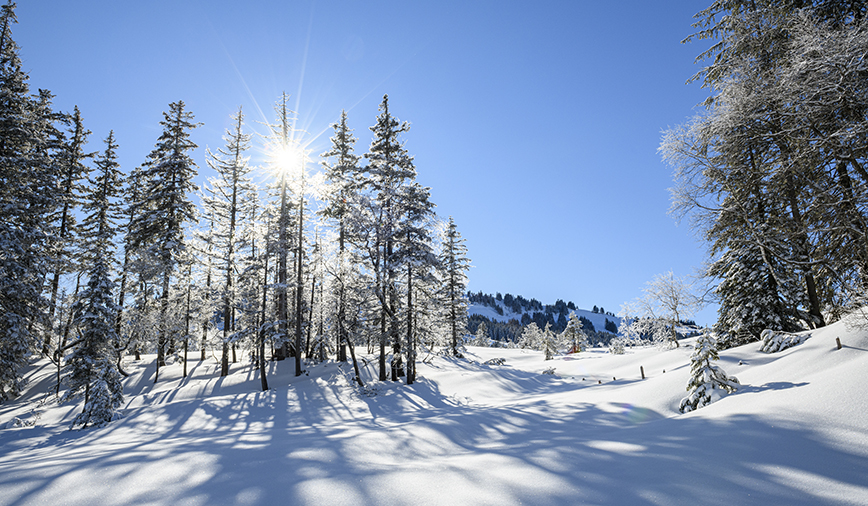There’s one in every neighborhood.
You know what I’m talking about. It’s the place on the block that’s always hopping—comings and goings at all hours, a near-constant stream of traffic in and out. Sometimes, as you walk by, you might even be able to hear the indistinct chatter that emanates from…your local evergreen.
Bedecked in green needle- or scale-like leaves all year long, these trees and shrubs not only add a splash of color to our sleeping landscape, but also serve as a refuge to all sorts of animals seeking shelter from the season’s wind, snow and cold.
The Austrian pines in the employee parking lot at the Pottawatomie Community Center are a great example. Just the other day, as I walked into work, I was stopped in my tracks by the noise coming out of the easternmost of these three trees. On one side, about two-thirds of the way up, a female downy woodpecker was tapping away at the bark, searching for insect tidbits. A little further down, a white-breasted nuthatch was doing the same. Meanwhile, on the other side of this Pinewood Diner, a gray squirrel was chewing the heck out of some sort of nut.
A couple evenings later, more action… I was unloading our naturalists’ station wagon when, again, I was distracted by noise from the tree. This time, however, the sound was quite different—a repeated squeaky whistling that sounded a little like a loose ball bearing. Only after a mourning dove shot out of the tree and flew just above my head did the light bulb go on: There was a predator of some sort in the tree, and the squeaking was coming from the wings of a dove that was trying to get away.
If I had to guess, I’d say s/he was successful, because a minute or so later a Cooper’s hawk flew out empty handed (taloned?) and headed toward Pottawatomie Park. Now completely sidetracked, I walked over to the base of the pine and found a single dove wing feather. No blood, no mess. Doves 1, Cooper’s Hawk 0.
In yet another recent evergreen encounter, I happened to be walking by a red cedar and was delighted to hear the high-pitched calls of my absolute favorite bird, the cedar waxwing. Perched in their namesake tree, looking sleek and comfortable, protected by the tree’s dense foliage, the seven birds looked as if the day’s icy breeze was the last thing on their minds.
Even though our area isn’t technically “evergreen country” (with the exception of the cedars, most of these trees are native to more northern latitudes), stands of pines, spruces and/or firs can be found in many of our local parks and natural areas. Usually, they’re what remains of a windbreak planted by the land’s previous owner.
If you come upon one, take a minute to look among the dead needles lying underneath—more often than not, you’ll come across an owl pellet or three. Such places are popular with roosting raptors. Whooo knows—you might even surprise the owls themselves!
While our area evergreens are party centrals right now, our local wetlands are peacefully quiet. But not for long. In just over a month, these fens, marshes, streambanks and ponds will burst forth with the boisterous babble of amorous amphibians.
Yep, frog mating season is almost here. With it comes another chance for you to make a difference in our natural world. Next Saturday, February 13, the St. Charles Park District will once again host a Chicago Wilderness Calling Frog Survey Workshop for Kane and Kendall County residents interested in becoming frog monitors. We’ll introduce you (or reacquaint you if you’re an existing monitor) to the 13 species of frogs and toads that live in the Chicago region, discuss the monitoring protocol and set you up with a site of your very own. Sound like fun? The session runs from 9 a.m. til noon. Give a call or send an email to let us know you’re coming–we’d love to see you there.
Pam Otto is the manager of nature programs and interpretive services for the St. Charles Park District. She can be reached at potto@stcparks.org or 630-513-4346.

